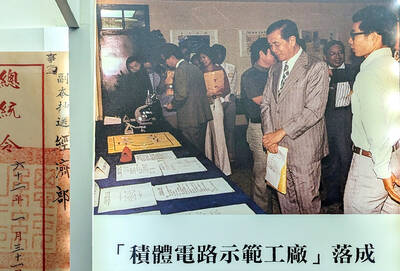Katyn is one of those place names, like Auschwitz or the Somme, the very mention of which calls forth images of death. Not just the deaths of individuals, terrible as that is in itself, but also the death, the willful ravishing of the human spirit, in the victims as well as the perpetrators.
The title of the film refers to the 1940 Katyn massacre in which an estimated 22,000 Polish prisoners of war were executed by Soviet troops. A concerted Soviet propaganda campaign was subsequently launched to place the blame for the massacre on the defeated Nazi regime, a campaign that, especially in its use of willing or unwilling collaborators, heaped insult on injury.
This is hardly new territory for Wajda, who has made many highly acclaimed feature films exploring Poland’s history, especially the depredations of the Soviets. Katyn cleaned up at the Polish Film Awards last year, and though the film’s appeal my not be quite so apparent outside Poland, it has also been nominated for Best Foreign Language Film at this year’s Oscars. The first hurdle to Katyn is that considerable knowledge of the complex political maneuvering behind Soviet-German relations during the early 1940s is crucial in appreciating the complexity of the enormous tapestry that Wajda weaves in Katyn.
The film juggles a number of story lines. It follows the gradual progress of the Polish officers toward their final destruction and the slow realization that the standards of war they had been taught no longer applied in this new and horrific conflict. It also follows the families left behind, who first hope, then grieve, then revolt against the imposition of lies they are forced to swallow. Wajda presents Poland, with its high intellectual traditions and strong middle-class values, as caught between two messianic regimes that want to recreate the world in their own images.
In the very first scene, we see that Wajda is setting Katyn up as a Greek tragedy on a grand scale. Anna (Maja Ostaszewska), the wife of an army officer, flees the Germans only to run into friends coming the other way, fleeing the Soviets. Which way to run? Poland is caught between the hammer and the anvil. Anna’s husband Andrzej (Artur Zmijewski), has a chance to sneak away in the chaos as Polish troops are corralled by the Soviets, but refuses to leave his regiment in the belief that as POWs, he and his troops will be dealt with according to recognized rules of war. His gradual realization that these rules have long since been thrown out the window is heartrending to witness.
And so the film progresses through its 118 minutes, and it is a marvel that Wajda is able to condense so much into such a sort time. In Hollywood, nothing less than three hours would suffice for such an epic, but Wajda is a master storyteller, conveying enormous complexities in three or four lines of dialogue. The emphasis of Katyn is political rather than personal, or, more correctly, its focus is the psychological and emotional impact that politics can have on ordinary people. Anna and Andrzej are both a kind of Polish everyman rather than deeply drawn characters, but they are convincing enough to elicit sympathy at their horrendous plight. Lieutenant Jerzy (Andrzej Chyra), Andrzej’s friend and comrade in arms, is a good man who toes the Soviet line in order to live, but shoots himself when he realizes that his actions have lost him everything he values. The characters are sketched with conviction, but you are left in no doubt that the protagonist throughout is Wajda’s beloved Poland.
And for the Polish officers held by the Soviets, Wajda lingers over the terrible images of carnage as man after man is taken from a Black Maria and shot in the back of the head. Some are stoical, others call on Jesus, others are merely bewildered, husbands, fathers, sons, dispatched with a terrifyingly dispassionate efficiency over a scene that runs for more than 10 minutes. This is the final exclamation point on which the film ends, and the harrowing injustice that such an action should have taken place stays with the viewer long after one leaves the theater. And, Wajda seems to say, this is only the beginning, for on top of the bodies lie a mountain of lies, and these lies will breed further injustice and more violent death.

Oct. 27 to Nov. 2 Over a breakfast of soymilk and fried dough costing less than NT$400, seven officials and engineers agreed on a NT$400 million plan — unaware that it would mark the beginning of Taiwan’s semiconductor empire. It was a cold February morning in 1974. Gathered at the unassuming shop were Economics minister Sun Yun-hsuan (孫運璿), director-general of Transportation and Communications Kao Yu-shu (高玉樹), Industrial Technology Research Institute (ITRI) president Wang Chao-chen (王兆振), Telecommunications Laboratories director Kang Pao-huang (康寶煌), Executive Yuan secretary-general Fei Hua (費驊), director-general of Telecommunications Fang Hsien-chi (方賢齊) and Radio Corporation of America (RCA) Laboratories director Pan

The classic warmth of a good old-fashioned izakaya beckons you in, all cozy nooks and dark wood finishes, as tables order a third round and waiters sling tapas-sized bites and assorted — sometimes unidentifiable — skewered meats. But there’s a romantic hush about this Ximending (西門町) hotspot, with cocktails savored, plating elegant and never rushed and daters and diners lit by candlelight and chandelier. Each chair is mismatched and the assorted tables appear to be the fanciest picks from a nearby flea market. A naked sewing mannequin stands in a dimly lit corner, adorned with antique mirrors and draped foliage
The consensus on the Chinese Nationalist Party (KMT) chair race is that Cheng Li-wun (鄭麗文) ran a populist, ideological back-to-basics campaign and soundly defeated former Taipei mayor Hau Lung-bin (郝龍斌), the candidate backed by the big institutional players. Cheng tapped into a wave of popular enthusiasm within the KMT, while the institutional players’ get-out-the-vote abilities fell flat, suggesting their power has weakened significantly. Yet, a closer look at the race paints a more complicated picture, raising questions about some analysts’ conclusions, including my own. TURNOUT Here is a surprising statistic: Turnout was 130,678, or 39.46 percent of the 331,145 eligible party

The election of Cheng Li-wun (鄭麗文) as chair of the Chinese Nationalist Party (KMT) marked a triumphant return of pride in the “Chinese” in the party name. Cheng wants Taiwanese to be proud to call themselves Chinese again. The unambiguous winner was a return to the KMT ideology that formed in the early 2000s under then chairman Lien Chan (連戰) and president Ma Ying-jeou (馬英九) put into practice as far as he could, until ultimately thwarted by hundreds of thousands of protestors thronging the streets in what became known as the Sunflower movement in 2014. Cheng is an unambiguous Chinese ethnonationalist,